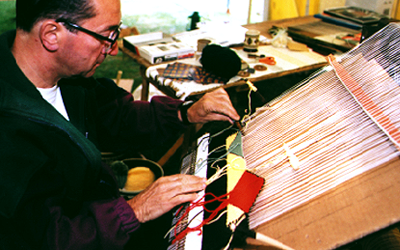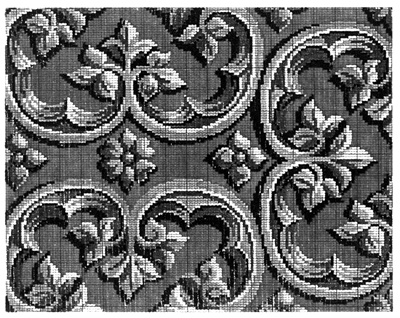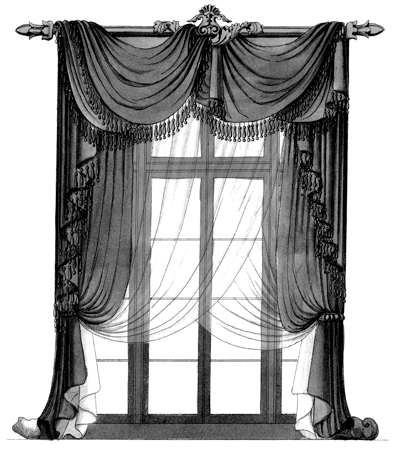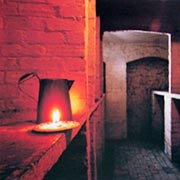Fabrics and canvas
The Regency period saw massive changes in the availability and production techniques of cloth. Spinning, which in the late 18th century was still largely a home based industry undertaken with a relatively simple treadle powered spinning wheel, was rapidly becoming a mechanised technology.
Ever more complex machines, such as Hargreaves ‘Spinning Jenny’ of 1764, and the ‘Mule’ and ‘Jack’, were capable of driving many rows of spindles and bobbins at once. This caused great hardship to the hand spinner, who had to spent considerable time degreasing and cleaning the newly sheared wool before they separated the fibres, with comb and card, prior to spinning.

Above: Weaver in action.
Weavers were faced with similarly stiff competition as simple devices, such as the two frame timber floor loom, were rapidly disappearing. Due to the industrial revolution complex machines were being introduced to make a wide range of household fabrics, from expensive wool moreens and silks, to simple linen products, sheets, blankets, table cloths, towels and domestic clothing.
Simple devices such as the two frame timber floor loom, in which a packaged weft thread was passed to and fro between an opening made by separating vertical ‘warp’ threads, were rapidly disappearing.

Above: Woven carpet.
Against this background however, consumers faced massively increased choice.
Fabrics and canvases had many different applications in the Regency home. They were employed to form the every day items found in the house, such as bedding, towelling and rags, as floor coverings, which ranged form the small ‘oil cloth’, to the fully fitted ‘Brussels’ carpet; as curtaining and upholstery materials; and as the backing to fine papers and fabrics.
This practice of attaching rich wall coverings to cheap canvas backing was used almost exclusively in the homes of the affluent. The interior wall decorations applied to the canvas layer that was stretched tight over wooden panelling might be comprised of many different materials, amongst them silk damask and velvets, wallpapers, and sometimes, instead of a paper or material finish, a decorative scene or design was painted directly onto the canvas.
 The use of canvas panelling had many advantages. The wooden sections could be rapidly prepared on site and were easily installed, they were also easy to stretch fabric across and offered a secure fix for any material that was to be a final covering. Furthermore, because the canvas panel and its wooden frame stood away from the masonry in a new building, it meant that a room’s final decoration could be introduced without having to wait for any damp plaster or similar material to fully dry out.
The use of canvas panelling had many advantages. The wooden sections could be rapidly prepared on site and were easily installed, they were also easy to stretch fabric across and offered a secure fix for any material that was to be a final covering. Furthermore, because the canvas panel and its wooden frame stood away from the masonry in a new building, it meant that a room’s final decoration could be introduced without having to wait for any damp plaster or similar material to fully dry out.
One final benefit to the canvas panel system was that decoration could be easily moved to a different location. Today, this method of decoration can still be seen in Brighton’s Royal Pavilion.
Occasionally, tapestries were used as decoration in the Regency home. These are hand woven patterned fabrics and should not be confused with embroidered work. Tapestries are woven on tapestry looms or on tapestry frames according to the nature of the unfinished work. The best known types of loom are the ‘upright’ and the ‘horizontal’ but sloping looms can also be used to produce excellent results.

Above: Regency window with draped curtains.
If you are interested in further reading on this topic, these links will provide you with more information:
Met Museum's 'Textile Production in Europe; Printed 1600-1800'
'Regency Era Wallpaper, or Decorating Your Drawing Room' by David W. Wilkin



